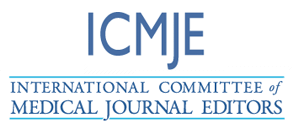Challenges of Severe Malaria Management in Patient Returning from Jayapura, Indonesia Presented with Severe Anemia: A Case Report
DOI:
https://doi.org/10.55677/IJCSMR/V4I6-01/2024Keywords:
Anti-Malarial Drugs, Severe Malaria, Severe AnemiaAbstract
We report a 55-year-old woman who presented to the hospital with intermittent fever for a month. The patient had a history of living in a malaria endemic area (Jayapura, Papua Province, Indonesia) for approximately 15 years. The hemoglobin level was very low (4.2 mg/dL). Furthermore, we conducted a follow-up supporting examination, Malaria Rapid Diagnostic Test (RDT), the result was positive for malaria tropica (Plasmodium falciparum). Blood smear test was also carried out to confirm the diagnosis, the result was that immature trophozoites (ring shape) were found. Thus, the patient was diagnosed with severe malaria tropica with clinical manifestations indicative of severe anemia. The patient was treated for 3 days with anti-malarial drugs and supportive drugs according to the symptoms in the hospital and was advised to follow up 7 days later. This case report describe the challenges of severe malaria management in patient returning from Jayapura with severe anemia.
References
Kulawiak N, Borys S, Roszko-Wysokińska A, Zgud-Jankowska N, Korzeniewski K, Sikorska K. Challenges in the diagnosis and treatment of malaria in Polish workers returning from Africa: A case series and review of literature. International Maritime Health. 2022;73(1):46–51.
World Health Organization. WHO guidelines for malaria, 16 October 2023 [Internet]. 2023. Available from: http://apps.who.int/bookorders.
Kementerian Kesehatan Republik Indonesia. Laporan Tahunan Malaria 2022. [Internet]. 2022. Available from: https://malaria.kemkes.go.id/sites/default/files/2023-11/Laporan%20Tahunan%20Malaria%202022.p
Mawson AR. The pathogenesis of malaria: A new perspective. Pathogens and Global Health. 2013 Apr;107(3):122–9.
Clark IA, Cowden WB. The pathophysiology of falciparum malaria. Vol. 99, Pharmacology and Therapeutics. Elsevier Inc.; 2003. p. 221–60.
Badiane A, Thwing J, Williamson J, Rogier E, Diallo MA, Ndiaye D. Sensitivity and specificity for malaria classification of febrile persons by rapid diagnostic test, microscopy, parasite DNA, histidine-rich protein 2, and IgG: Dakar, Senegal 2015. International Journal of Infectious Diseases. 2022 Aug 1;121:92–7.
Lee JH, Jang JW, Cho CH, Kim JY, Han ET, Yun SG, et al. False-positive results for rapid diagnostic tests for malaria in patients with rheumatoid factor. Journal of Clinical Microbiology. 2014 Oct 1;52(10):3784–7.
Gatton ML, Ciketic S, Barnwell JW, Cheng Q, Chiodini PL, Incardona S, et al. An assessment of false positive rates for malaria rapid diagnostic tests caused by non-plasmodium infectious agents and immunological factors. PLoS ONE. 2018 May 1;13(5).
Pittman RN. Regulation of Tissue Oxygenation. San Rafael (CA): Morgan & Claypool Life Sciences; 2011. Chapter 7, Oxygen Transport in Normal and Pathological Situations: Defects and Compensations. Available from: https://www.ncbi.nlm.nih.gov/books/NBK54113/
Baldwin C, Pandey J, Olarewaju O. Hemolytic Anemia. [Updated 2023 Jul 24]. In: StatPearls [Internet]. Treasure Island (FL): StatPearls Publishing; 2024 Jan-. Available from: https://www.ncbi.nlm.nih.gov/books/NBK558904/
Kai OK., Roberts DJ., The pathophysiology of malarial anemia: where have all the red cells gone? BMC Med. 2008 Aug 21;6:24.
Nicholas, JW. Anemia and Malaria. White Malar J. 2018. 17:371
Nicholas Day. The Management of Patients with Severe Malaria. Am. J. Trop. Med. Hyg (Suppl 6). 2007, pp 29-35.
Downloads
Published
How to Cite
Issue
Section
License
Copyright (c) 2024 International Journal of Clinical Science and Medical Research

This work is licensed under a Creative Commons Attribution 4.0 International License.











